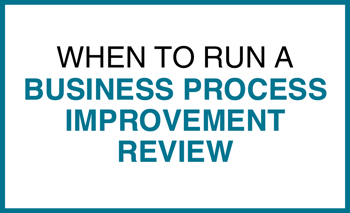
 A business process review project is a great way to evaluate your company’s software capabilities, both as prep-work for a larger project and as a standalone review, as it gives you a holistic view of your organization’s JD Edwards software. But when should you do a JD Edwards Business Process Improvement Review? Here are three scenarios that we feel necessitate a thorough look at your software.
A business process review project is a great way to evaluate your company’s software capabilities, both as prep-work for a larger project and as a standalone review, as it gives you a holistic view of your organization’s JD Edwards software. But when should you do a JD Edwards Business Process Improvement Review? Here are three scenarios that we feel necessitate a thorough look at your software.
Quite simply, if you’re starting a major software project, whether it’s a JD Edwards upgrade, replatform, or implementation, you would have to be crazy to not run a business process improvement check or audit. At its core, a BPR allows you to identify all of the software components that are currently in play in your organization, how they interact with each other, and what purpose they serve. It maps out the “as-is” version of your business so that you can determine the “to-be” version on the new platform.
A Business Process Improvement Review will highlight all of your business processes, including those that could be streamlined or eliminated with the new software. Identifying those needs before the project kicks off will allow you to plan ahead for any modifications or customizations that will be required to meet your business needs.
When two companies merge or one acquires another, a business process review is crucial. Typically, a BPR will be run on the company that is being purchased so that the new parent company can get a clear idea of how the acquired company operates. From there, the company doing the purchasing can decide how the acquired company slots into their organization, or if they want to leave this new acquisition to run on its own.
If your business has seen any sort of drastic growth, whether that’s due to a merger or acquisition or simply your business really taking off, a BPR will help you establish your new baseline and figure out where you can improve your operations.
Another scenario that warrants a BPR is if your company has split or part of it has been sold off. You should run a BPR on the remaining part of your organization to evaluate what is left, what has changed, and how you will need to adjust.
Whether you’ve had a lot of recent turnover or have just added a slew of new team members, onboarding your new staff can be tricky. That’s why we recommend running a BPR when you experience any significant staff changes.
In this case, a BPR is a good way to document your business processes and lay the foundation for your team. It’s an opportunity for your staff to get together and go over how things get done. A BPR is great training for new staff members, as it helps them understand how your company runs and who the key players are. It can also give you a look at the training needs of your existing staff.
Essentially, a BPR is an insurance policy for staff turnover. With all business processes documented, you will be able to onboard new staff much faster.
Running a business process review in any of these scenarios will help you organize your business processes and prepare you for the challenge ahead.
Do you need to run a JD Edwards business process review on your company? We can provide you with information to help you do it yourself. Rather have some additional support? Contact our team.
Lorem ipsum dolor sit amet, consectetur adipiscing elit

For the past two decades, we've made it our business to help you work smarter. From commerce challenges to ERP customizations, we support the power of your big ideas by helping you work more strategically, more intuitively, and more efficiently.
2658 Scranton Road, Suite 3
Cleveland, Ohio 44113
216.369.3600
No Comments Yet
Let us know what you think